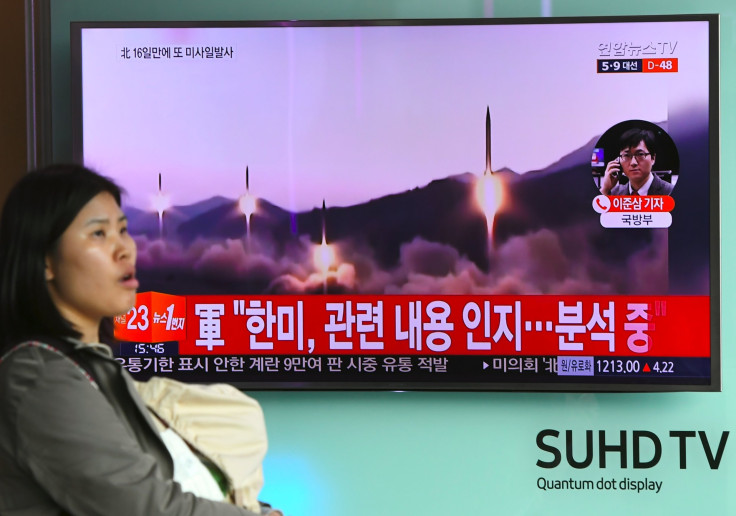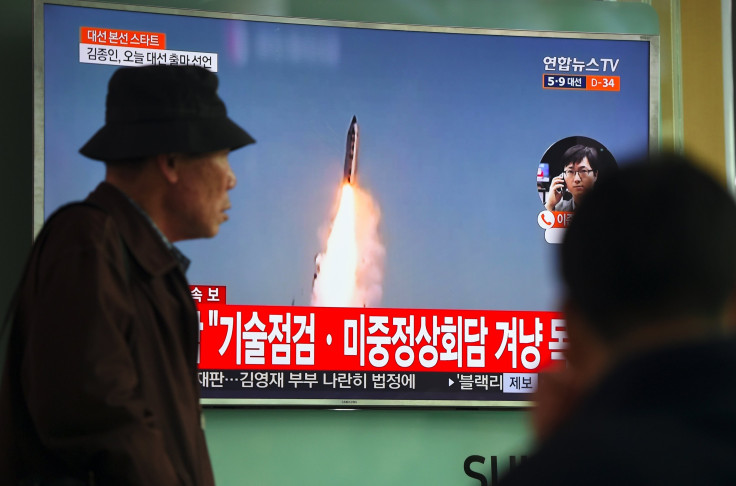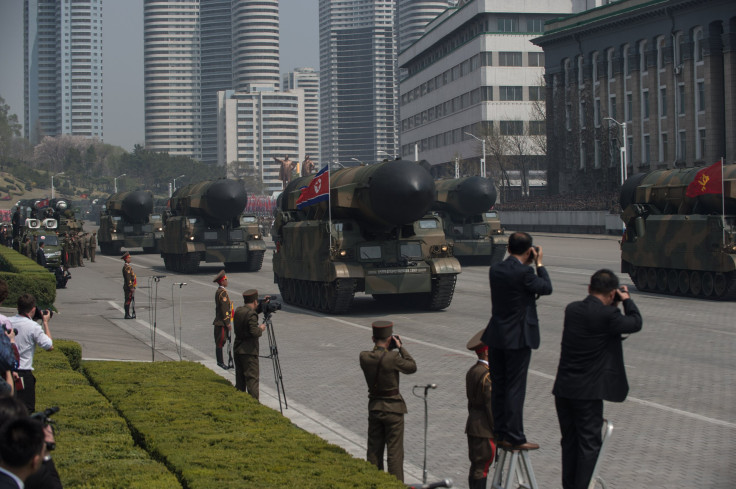Can North Korea’s Nuclear Missiles Hit The US? Weapons Program Advancing ‘Faster Than Expected’

North Korea’s missile defense program was developing faster than expected, South Korean officials confirmed Tuesday. North Korea test-launched a missile Sunday, the presence of which was detected by the United States’ missile defense system installed in South Korea.
South Korean defense minister Han Min-koo told the country’s parliament that Sunday’s missile launch was “successful in flight.”
“It is considered an intermediate range ballistic missile of enhanced caliber compared to Musudan missiles that have continually failed,” he said. Musudan missiles can travel a distance of up to 2,485 miles, according to Reuters. North Korea’s state news agency KCNA said the launch Sunday was intended to test if it could carry a “large-size heavy nuclear warhead."
KCNA said the missile flew 489 miles and reached an altitude of 1,312 miles. North Korea said the missile, called the Hwasong-12, was capable of carrying a large nuclear warhead that could potentially hit the mainland of the U.S.
"The test-fire aimed at verifying the tactical and technological specifications of the newly developed ballistic rocket capable of carrying a large-size heavy nuclear warhead," KCNA said in a report, noting that mainland U.S. and operations in the pacific were in North Korea's "sighting range for a strike and that it has all-powerful means for a retaliatory strike."
South Korea said it had not verified the claims, but that Pyongyang may have been successful in creating re-entry technology that would allow missiles to reach their intended targets.
Read: United States Installs Missile Defense System In South Korea
North Korea has continued to test its missile capabilities despite calls from the United Nations to immediately cease its nuclear testing. North Korea’s ambassador to China said in Beijing Monday that it would continue its test launches “anytime, any place.”

North Korean diplomat Ju Yong Choi told the U.N. Conference on Disarmament in Geneva Tuesday that Sunday’s launch was a direct response to the U.S. and that the country was acting in “self-defense.”
"The DPRK [Democratic People’s Republic of Korea] will bolster its self-defense capabilities as long as the United States continues its hostile policies toward the DPRK and imposes nuclear threats and makes blackmail,” he said.
While Sunday’s missile launch was successful in flight, four tests by North Korea over the past two months had failed. Those tests, however, likely gave North Korea significant technological knowledge they would have built upon for future tests.
North Korea warned the U.S. about its recent military drills with South Korea as well as its missile defense system, the Terminal High Altitude Area Defense system (THAAD), installed in South Korea in April. The system was designed to destroy North Korean missiles before they had a chance to hit their target. North Korea accused the U.S. of escalating tensions with its actions.
“By relentlessly bringing in a number of strategic nuclear assets to the Korean peninsula, the U.S. is gravely threatening the peace and safety and driving the situation to the brink of nuclear war,” North Korean officials said in a statement in April. “This has created a dangerous situation in which thermo-nuclear war may break out at any moment.”
Read: Voters Think Nuclear War With North Korea Is Highly Likely
Vice President Mike Pence cautioned during a visit to the demilitarized zone between the North and South in April that the U.S.’s policy of “strategic patience” toward North Korea had ended and that all options remained on the table. President Donald Trump also made similar statements.
Trump was set to meet with South Korean President Moon Jae-in next month to discuss North Korea.
“There is a chance that we could end up having a major, major conflict with North Korea,” the president told Reuters in April. “We’d love to solve things diplomatically but it’s very difficult.”

© Copyright IBTimes 2024. All rights reserved.






















